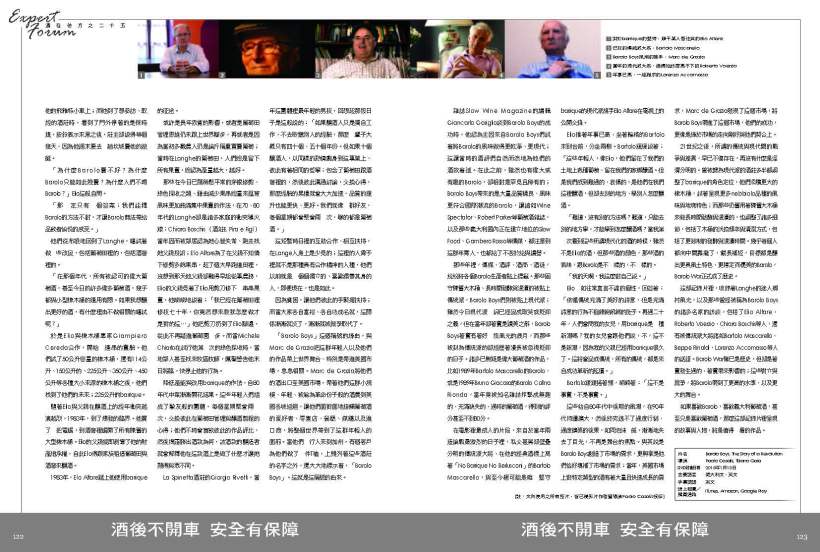



Around 1980 I was on a budget holiday in Northern Italy, where most meals were bread, cheese and ham picnics. However, one evening we pushed the boat out and went to a proper (albeit cheap) restaurant. I remember we ordered a bottle of Barolo and, even though I had little interest in wine in those days, I can still conjure up a vivid image of how it tasted: brown, tannic, and totally devoid of fruit. Today I would probably send it back, and I did consider it back then. But of course we drank the bottle, even though it gave no pleasure.
That must have been an example of the wine that prompted the modernist revolution in Barolo. It was the style of wine that sold for little money and kept the wine growers in poverty, as described in Barolo Boys, The Story of a Revolution. But then how does it relate to the great traditional Barolo wines that, in the same documentary, David Berry Green said were so fantastic? Ultimately I am still left a little confused about what the situation was before the revolution, and how it relates to the current state of affairs. However, it seems that the quality of Barolo has been raised generally, irrespective of whether the traditionalist or modernist tag is applied. Are the Barolo Boys to thank for that? Regardless, it must be seen as a good thing.
The Barolo Boys were a group of producers who introduced crop thinning, shorter maceration times and barrique aging, thus making the wines more appealing to consumers and critics alike, and allowing them to sell for a lot more money. The film tells this story through interviews with the people involved, and through archive clips. However nice it was to meet the people, learn a bit about their culture and see the landscape, I am not convinced that is the best way to understand a story, but I cannot deny that I did learn quite a bit.
I am a little ashamed to admit that I used to think that the Barolo Boys was just the name of the winemakers’ football team. Though it is that too, and the football team even featured in the film. The other surprise was to see the documentary’s Langhe landscapes suddenly switch to the volcanic Mount Etna and Marco de Grazia. I know about Marco – he is the guy that is currently busy raising the profile of Etna wines. But what’s he got to do with Barolo? Ah, I see… before he arrived in Sicily he encouraged the Barolo revolution, introduced the Barolo Boys to America, and imported their wines. In fact, it was on the American tour organised by him that their name was coined.
Interestingly, the booklet that accompanies the DVD mentions that in the early 19th century Nebbiolo was used to make a wine that was semi-sweet and slightly fizzy. But the landowners wanted something better, so experts were called in to introduce the latest winemaking techniques. Does that sound familiar? Terms like traditional and modern are, if they have any meaning at all, relative terms. My only concern about change, particularly with modern communications, is that stylistic choice in the world of wine might get diminished. That might be a real danger in some cases, but I would say today’s Barolo remains distinctive. And if you want red wine in the early 19th century style, you can still get that from the region, in the form of Bracchetto d’Aqui. Has much really been lost?
If you are interested enough to read my blog, I think there is something in this documentary for you. DVDs of Barolo Boys, The Story of a Revolution are available here, along with further information. That is where I bought my copy. But be warned – the homepage is a badly-executed multimedia extravaganza, so you will probably want to turn your computer sound off. If you want to see the trailer, you’d do better accessing it on Vimeo directly, by clicking on the above image for example.
Update 03/2016: I was recently talking to a Barolo expert (but not sure he would want to be quoted on this), who said that before the revolution the general standard was poor. But there were a few producers making good age-worthy wine that sold for more money than most, and that David Berry Green was probably mainly thinking of one in particular that he had an involvement with.